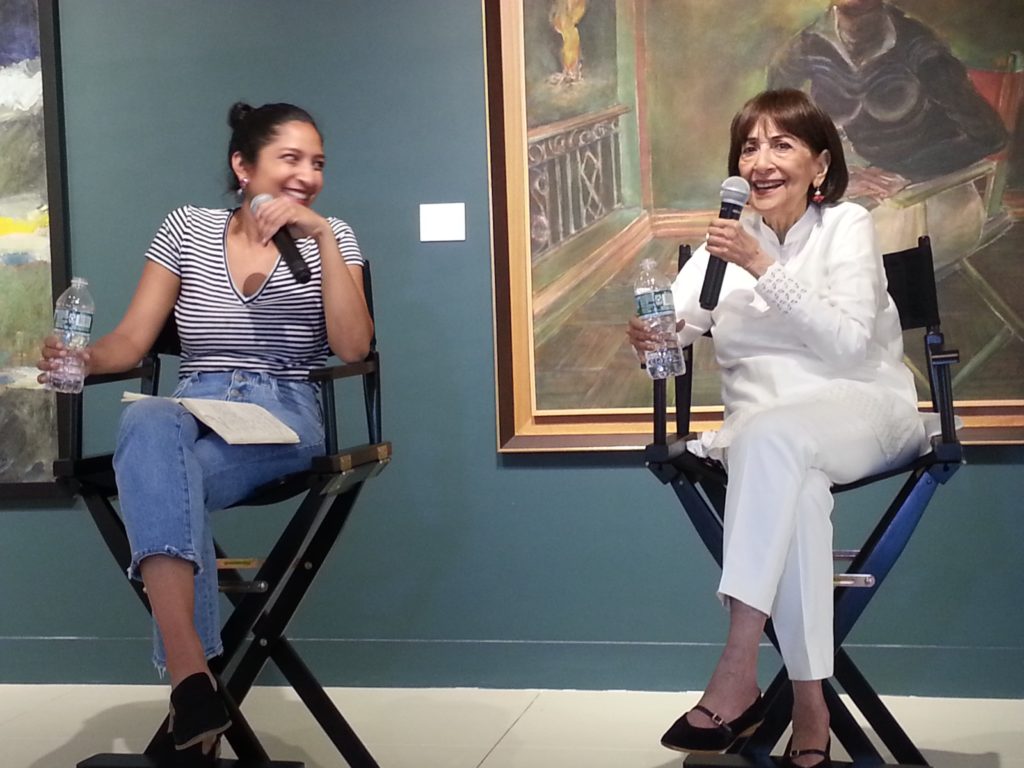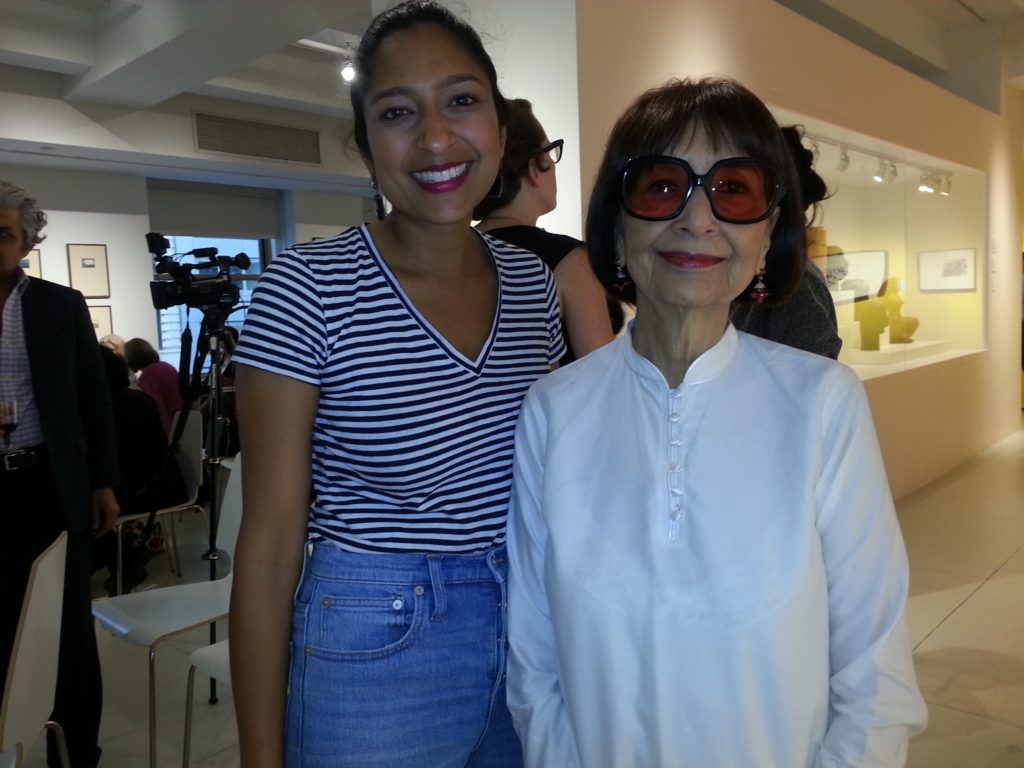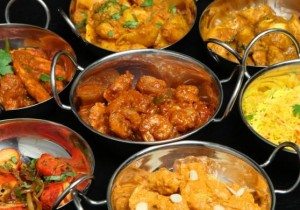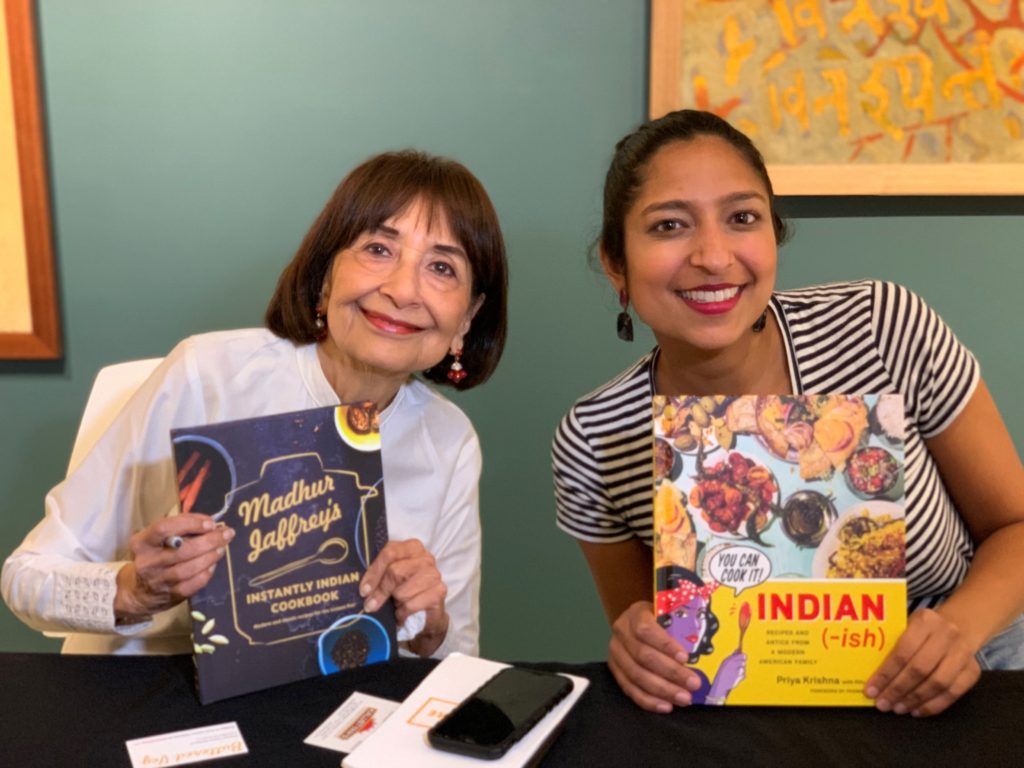577 people reached on Lassi with Lavina FB page – 78 engagements – 9 Likes
Lokesh Jangid, Rajendran Po and Seema Iyer like it on Lassi with Lavina FB page
Madhur Jaffrey, Priya Krishna & the Journey of Indian Food
[dropcap]I[/dropcap]ndian food – like Indians – seems to be omnipresent in America. A modest estimation puts the number of Indian restaurants at 5000 and you have every kind of establishment from Michelin star rated to family eatery to hole in the wall. You can get everything from authentic and traditional to fancy fusion dishes. Every American knows ‘Chicken vindaloo’ and ‘saag paneer’ and these dishes are available in just about every form: fresh, takeaway, frozen and shelf-stabilized. You can get dosas from a vendor’s cart near NYU and quick Indian lunches from a food truck on Park Avenue.
Indeed, the No. 1 reason for growth of Indian food in America is the ever-burgeoning Indian population in the US. Now Indian restaurants are all over the map of America – forget Red States and Blue States, desi samosas are crossing statelines! Yes, we’ve come a long way since 1921 when the first Indian restaurant opened in New York on 42nd Street, the Taj Mahal Restaurant serving ‘Hindu’ and Persian food.

[dropcap]S[/dropcap]ince then 1000’s of Indian restaurants have opened and many have closed and the question still remains, what is ‘real’ Indian food? The issue is further complicated by the fact that many Pakistani or Bangladeshi restaurants are simply called ‘Indian’ restaurants and ‘curries’ don’t really define Indian food. Also, one wonders, what are Indians living in America eating at home?
So what is the DNA of Indian food in America – and is it trending or blending?
A Chat with Madhur Jaffrey & Priya Krishna – Courtesy: IAAC
Instantly Indian
[dropcap]F[/dropcap]or the answers we turned to Madhur Jaffrey, the high priestess of the Indian culinary arts and author of several cookbooks, seven of which have received James Beard Awards In fact, her very first cookbook, An Invitation to Indian Cooking has been inducted into the James Beard Hall of Fame. An award-winning actress, she learnt cooking via her mother’s recipes sent to her via aerogram when she was an acting student at RADA in London. Jaffrey is an immigrant twice over, first to the UK and then to America.
The Indo-American Arts Council recently brought her together in conversation at DAG with a first generation Indian-American, the food writer Priya Krishna who writes for The New York Times, Food and Wine and Bon Appétit. She is also the author of an innovative new cookbook, Indian-nish: Recipes and Antics from a Modern Indian Family, named one of the best cookbooks of the spring. It was insightful to see the two sharing their thoughts and memories of food from different vantage points and changing times.
“I don’t think Indian food as Indian food will come into America because what we have is not Indian food – we have regional food from Kashmir down to Tamil Nadu – and those are not going to come to America in their true form,” said Madhur Jaffrey. “Indian regional food remains a mystery to Americans.” So what will happen? Jaffrey feels Indian cuisine will become generalized, based on the American style of eating. “I think that’s what is happening and that’s what will happen.”
Indian-ish
[dropcap]P[/dropcap]riya Krishna has grown up Indian-American, the child of immigrant parents in Dallas, Tx. She has co-authored Indian-ish with her mother Ritu, a software programmer, who balanced a full-time job and a hungry family by creating ‘Indian-ish’ meals, high on flavor and low on cooking time – every day food which are Indian-American hybrids that are easy to make. Her way of cooking and eating is how many Indian-Americans eat.
Jaffrey lays a lot of hope in this new generation, which growing up Indian-American identify as brown and have a sense of ownership and confidence about their place in America. Indian food is getting a stronger profile from this new generation. As she said, “They have decided who they are. They are fighting and doing things we were not allowed to do. So hats off to you!”
Indians are so much a part of the culture now that awareness of Indian food – in whatever variations – is coming to the forefront. It is the part of the wave of Indian culture which seems to have hit America recently, be it with the wedding of Priyanka Chopra or the ascendency of Mindy Kaling – bold new voices which have made everything Indian cool and visible on the global radar. So Indian food is here to stay, be it via generalized Indian food, regional dishes, master chefs or even street foods or spiced up Americanized food. Inter-marriages in the new generations are also introducing Indian home food to so many varied families so it is constantly evolving.

Indian Food – Complex or Simple?
[dropcap]I[/dropcap]ndeed, the bad rap that Indian food has got is that is that it’s too complicated and hard to make while in reality real home food is stunningly simple. Both authors say the secret is to not let yourself be overwhelmed with spices, and the onus is on writers to make it simpler for consumers. Jaffrey points out that potatoes can be cooked in 60 different ways with the addition of just one or more spices. She describes how eggplant can taste delicious with the addition of just one spice – kalonji or nigella. “That’s what we call the magic of spices!”
Priya Krishna shared how pao bhaji is her solution for hungry hordes. It’s easy to make, keeps everyone full, has got carbs and vegetables and people love the burger bun! She points out that Indian cooking is really simple. Her mother once drew her diagram on a napkin titled ‘How to make any Indian food’ “It’s not rocket science!”, she says.
[dropcap]I[/dropcap]n her new book Jaffrey bows to the instant pot which so many in America use. The book is Instantly Indian cookbook – she recalls that certain things never change. “When we were children in India, my mother would leave lunch leftovers for us in the oven. When we came home from school, we would cut off thick ends from loaves of bread, hollow them out an fill them with say ground lamb with peas, topped with yogurt or pickles and just devour them. In a similar spirit you can make sloppy joes with some of the meat dishes.”
And that is what many Indian-Americans are doing – transforming their hasty tasty quick American meals with a dollop of Indian flavors and spices. They cannot abide spice-less food so are adding their own blend into American convenience food they might eat at work or home. After all, who has not added garlic and chilies to spaghetti or Indianized their plate of mac and cheese?
As Madhur Jaffrey says, “ Feel easy with the recipes and incorporate them into your lives in ways that best suit you. The foods in this book are very Indian. But you may eat them in as American a way as you like.”
And that may be the mantra for both Indian restaurants as well as Indian homes in America in the future for Indian food is still evolving and changing in America – it is a work in progress.
(This article first appeared in my column India in America in CNBCTV18.com)
Related Articles:

Madhur Jaffrey: Mistress of Spices


